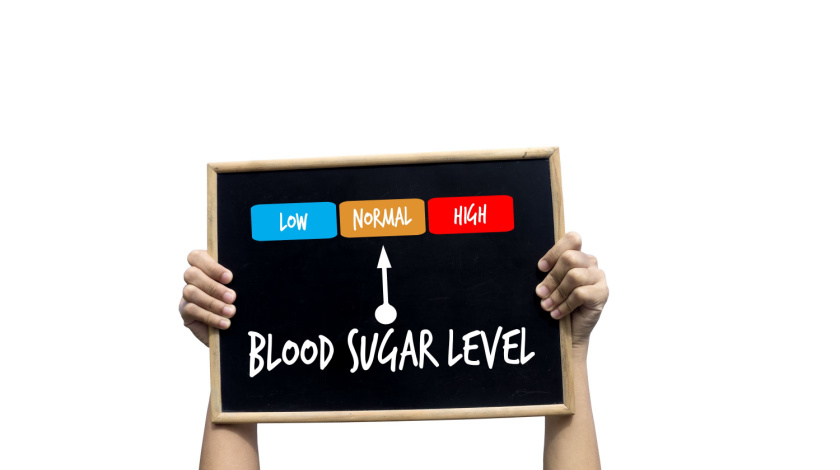Most of us have heard about diabetes at some point in our lives, either in the family or within our friend circle. If left untreated or ignored, diabetes can be quite debilitating. For the uninitiated, it is a medical condition where the sugar level in the bloodstream is more than the stipulated value. It typically happens when the human body produces less insulin (a hormone responsible for transferring and processing sugar) or refuses to accept insulin signals, called insulin resistance. Either way, it leads to the build-up of sugar. Fortunately, this ailment can be managed through medication and external insulin intake. Diabetes can be managed and even reversed through—a diabetes reversal plan, which is relatively safe and natural. What you need is dedication and perseverance.

The natural path to diabetes reversal is tricky and demands time and effort from the affected individuals. However, successful diabetes reversal allows you to live a happy life, and that too without medicines.
The Promise of Diabetes Reversal – Is It Achievable?
Before we delve into this question, let us first understand the different types of diabetes. Surprisingly, even people with diabetes are unaware that there are different types of diabetes, such as —type-1, type-2, and gestational.
You need to understand that reversing type-1 diabetes naturally is not possible. The reason being it is an autoimmune disease where the human body’s defence system kills its own beta cells that produce insulin in the pancreas. However, in tandem with medication/insulin, type-1 people with diabetes can reduce the frequency of insulin intake and simultaneously lessen the risks of long-term organ damage/developing associated health issues. For folks who have been diagnosed with type-2 diabetes, adopting a diabetes control program allows them to reverse this condition.
You must understand that the risk of developing diabetes is high in obese individuals or aged folks. People under stress are also susceptible to long-term glucose toxicity. On the other hand, gestational diabetes affects certain pregnant women. It is temporary in nature and mostly disappears after childbirth. Weight control is the key here; therefore, most doctors recommend ways and means to keep it under check.
A point to note—Pre-diabetic is a state where the blood sugar value of the affected individual hovers around the threshold but has yet to cross over. Interestingly, it is quite easy to reverse this type of condition.
Nutritional Foundations for Reversing Diabetes – A Balanced Approach
One of the essential requirements of reversing diabetes naturally is eating healthy food. Whether you are planning to adopt a diabetes reversal strategy on your own or through a professionally customised program which involves doctors and dieticians, the consumption of healthy and balanced food is extremely important. By incorporating fibres, carbs, fats, and proteins in the right proportions and portions, you can easily lower BMI and, thereby, blood glucose levels.
Add good old oats and whole wheat to your breakfast/lunch. Legumes and beans are excellent options for the body’s carbohydrate needs. These are digested slowly, preventing sugar spikes. Avoid trans-fat. Instead, add nuts such as almonds and hazelnuts to your diet plan. This can be consumed as snacks or sprinkled on cooked food. Make sure you prepare your meals in canola or olive oil. These mono-saturated fats prevent weight gain, and they are cholesterol-friendly too. For proteins, fish/eggs are an excellent choice. Nutrients, too, are important. Magnesium supplementation can go a long way in supporting your glycemic goals. “The Plate Method” is essential to diabetes care and diabetes reversal. It simply means laying out food in restricted portions on a plate which is a couple of sizes smaller than the regular one.
Active Living – Exercise and Physical Activity in Diabetes Reversal
Reversing diabetes naturally is highly dependent on weight loss, especially if you are obese. Studies have revealed that even a 5% reduction improves blood sugar levels significantly. So, how does weight affect diabetes? To put it in simple words, exercise improves insulin resistance. In simpler terms, weight loss strengthens the functioning of beta cells. Obese people with diabetes typically rely on insulin/medications, but post-exercise and regular physical activity, especially after lowering their BMI, they shift towards low-potency medicines. Still, later, they are completely taken off external support when their HbA1c test consistently remains below the recommended level.
However, a strict diet and regular exercise routines can take some time to show results. It may take even longer to get off insulin/medication completely. Remember, it is not about how to “control type-2 diabetes”. It is about diabetes reversal; therefore, you must pursue this regime religiously. Getting back to your original lifestyle can prove disastrous and counterproductive.
Routines frequently suggested by experts include cardio (brisk walking, running, cycling, and even swimming), muscle strengthening/resistance (squats, push-ups, or weights), and/or resistance band training. Stretching exercises also help to a certain extent.
Stress Management and Diabetes – Strategies for a Healthier Mind and Body
The human body is extremely complex. It reacts to internal and external threats in different ways. For example, in people who suffer from autoimmune disease or are highly emotional, their bodies respond by attacking and damaging their own tissues and even organs (type-1 diabetes). Interestingly, stress is also perceived as a threat, and our body typically reacts by releasing certain hormones that play havoc with metabolism and trigger immunosuppressive processes.
The moment the said external stimuli or the threat fades away, the body reverts to its old biological mechanisms. However, chronic stress can damage several essential processes, resulting in “catabolism”. Some common ways to address stress, an essential part of diabetes control programs, include.
- Meditation and Mindfulness – Adopting 10 to 15 minutes of meditation every day and mindfulness routines that typically slow down / negate disturbing thoughts.
- Leisure Activities – Indulging in activities which calm the mind. This could be painting, gardening, music, or reading a book.
- Joining social or cultural groups.
- Taking a break from routine/travelling.
Monitoring Progress – Tracking Your Way to Diabetes Reversal
Most of the information/articles related to diabetes reversal plans do not mention anything about regular monitoring. Imbibing such plans/programs and then not monitoring the progress can be dangerous at times. Checking your blood sugar levels regularly will help you tweak your insulin intake/medications accordingly. In many cases, individuals may also have to tweak their food choices. The idea is to restore healthy insulin production and efficient use by the cells.
Read More: How Has Advancement In Technology Impacted Diabetes Care?
Conclusion
If you are embarking on a journey of “Diabetes Reversal”, you need to understand some of its prerequisites and limitations. At the very outset, the support of a diabetes expert/educator and a healthcare professional is essential. Monitoring is yet another crucial aspect of the diabetes reversal program. You should also realize that the term diabetes reversal is ambiguous. It simply means adopting new lifestyle/workout routines to lower your blood sugar levels and normalize the same. A successful culmination of this journey will ensure a life free from insulin and diabetes medicines.




